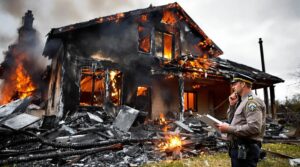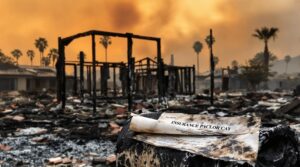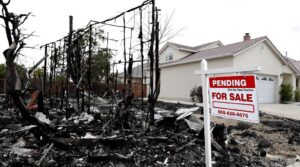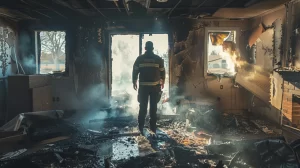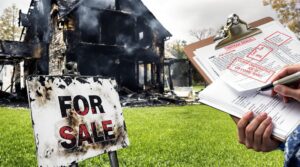Following a house fire, a homeowner’s immediate priority is to guarantee their safety and the safety of others. After receiving clearance from the fire department, they should assess the damage, document losses, and identify areas requiring urgent attention.
The homeowner should also notify their insurance provider, seek temporary housing, and explore local relief services. Further steps are essential to guarantee full recovery from the incident and a smooth rebuilding process.
Key Takeaways
- Wait for fire department clearance before re-entering the home and document damage for insurance claims.
- Contact 911, homeowners insurance company, and utility providers to report the fire and initiate necessary repairs.
- Utilize local disaster relief services and explore short-term rental options for temporary housing accommodations.
- Create a detailed inventory list of affected personal belongings and maintain organized records of all communications with the insurance agent.
- Prioritize mental health, install smoke detectors in every room, and create a fire escape plan to prevent future fires and ensure a smooth recovery process.
Assessing The Damage & Ensuring Safety
Once a house fire has been extinguished, it is crucial to wait for the fire department to declare the home safe before re-entering. This allows authorities to evaluate potential hazards, including structural instability or re-ignition threats. Upon receiving clearance, begin examining the damage by documenting the extent of destruction.
Temperatures from a house fire can reach up to 1,500 degrees Fahrenheit, compromising the integrity of walls and ceilings. Thorough documentation is critical for filing insurance claims and guaranteeing fair compensation. Inspection for hidden damage caused by smoke and water is also necessary. To promote safety, turn off utilities to prevent further hazards and consult utility providers for necessary repairs before re-establishing services.
This step initiates the fire damage restoration process. Similar to roof damage claims, detailed photographs and documentation will significantly impact your settlement amount. Prioritizing safety allows for a smoother recovery process, benefiting those affected by the house fire. Accurate evaluations also facilitate efficient restoration efforts.
Contacting Emergency Services & Insurance Providers
Following a house fire, while still safeguarding the safety of everyone involved, it is essential to contact 911 or local emergency services to report the incident and solicit assistance for any injuries or potential hazards that may be present. This prompt action enables emergency responders to provide necessary aid and secure the area.
Once the situation is under control, contacting the homeowners insurance company is imperative to initiate the claims process as soon as possible. The homeowner should provide detailed information about the incident and submit supporting documentation, including photographs of the damage and a list of affected items. Additionally, obtaining a copy of the fire report from the local fire department is critical, as the insurance provider will require it.
Regular communication with the insurance agent guarantees clarity on coverage details and the claims process, facilitating a smoother recovery. Consulting with public adjusters exclusively can ensure unbiased representation and maximize your settlement potential throughout the claims process.
Finding Temporary Housing & Meeting Immediate Needs
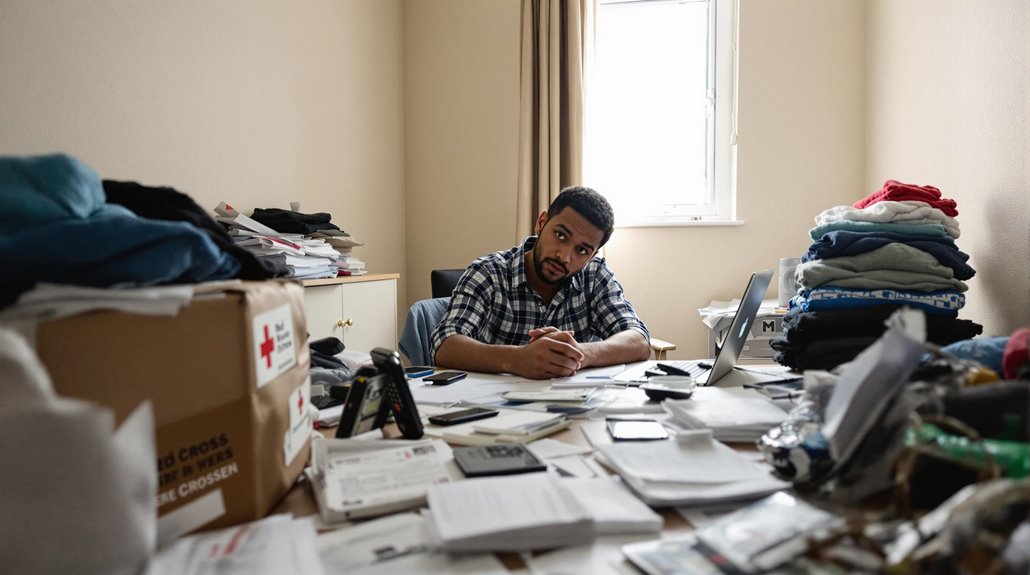
After notifying emergency services and initiating the insurance claims process, individuals affected by a house fire must address their immediate need for temporary housing. Many insurance policies include provisions for living expenses during the recovery period, and policyholders should promptly contact their insurance company to inquire about coverage for temporary housing.
Additional living expenses coverage helps ensure families can maintain their normal standard of living while displaced from their homes. Local disaster relief services, such as the American Red Cross, can provide immediate assistance with finding temporary accommodations and may offer financial support for housing needs. Those affected can also explore short-term rental options through platforms like Airbnb or local housing agencies.
Temporary housing expenses, including hotels or rental properties, should be documented with receipts for reimbursement claims with the insurance provider. Staying with family and friends may be a viable temporary option, offering emotional support and reducing immediate financial burdens. Efficient utilization of these resources enables individuals to focus on recovery and rebuilding.
Documenting Damage & Losses For Insurance Claims
Documenting damage and losses following a house fire is vital in facilitating the insurance claims process. First, take thorough photographs of all damaged areas and items immediately after the fire to provide visual evidence for your insurance claim. A detailed inventory list of all personal belongings affected by the fire should also be created, including descriptions, estimated values, and the condition of each item.
In addition to visual documentation and an inventory list, collecting supporting documentation such as receipts, bank statements, and previous valuations is essential in validating the losses reported to your insurance company. A copy of the fire report from the local fire department should also be obtained, as it serves as an official document that your insurance provider may require during the claims process.
Maintaining organized records of all communications with your insurance agent guarantees clarity and accountability throughout the claims process. Consider hiring a public insurance adjuster to help maximize your settlement, especially if your fire damage claim is complex.
Salvaging & Cleaning Personal Belongings
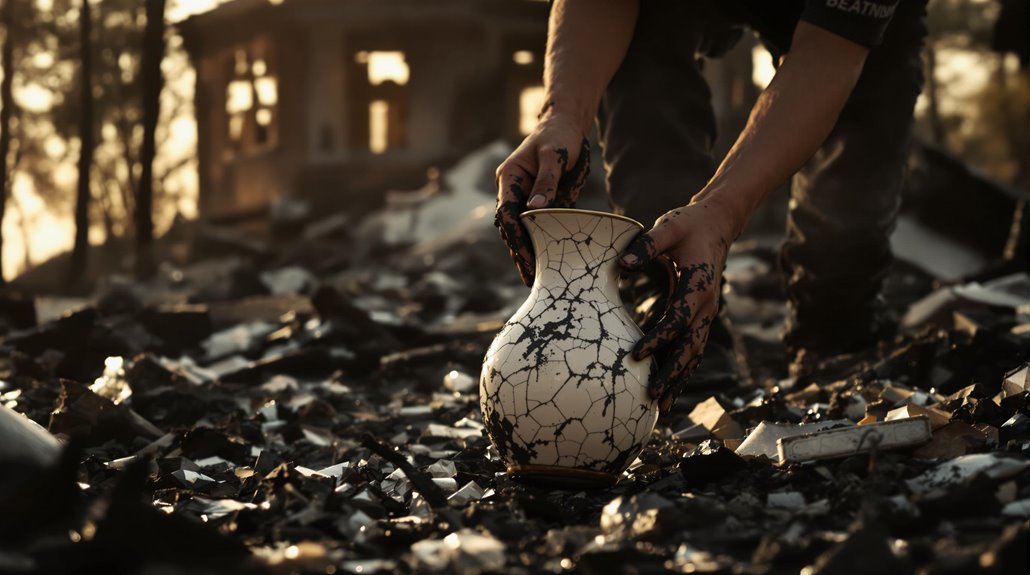
Once an inventory of damaged items has been compiled for insurance purposes, the focus can shift to determining which personal belongings can be salvaged or cleaned. This process involves categorizing items into salvageable and non-salvageable groups and consulting with professionals to assess which items can be cleaned or repaired.
Damaged possessions deemed salvageable should be cleaned using appropriate methods to prevent further damage. Professional cleaning may be necessary for specific items. Cleaned items should be stored in a clean, dry area to prevent re-contamination. This careful approach helps guarantee the recovery of as many personal belongings as possible, supporting insurance claims and the overall recovery process.
| Item Type | Cleaning Method |
|---|---|
| Textiles | Professional cleaning or gentle hand washing |
| Hard Surfaces | Wipe down with a mixture of water and vinegar |
| Electronics | Inspect and clean by a professional before use |
Managing Stress & Emotional Trauma
Emotional turmoil can be a profound consequence of a house fire, leaving survivors to navigate a complex emotional landscape marked by feelings of trauma, loss, and vulnerability. Research indicates that nearly 60% of fire survivors report considerable emotional distress, highlighting the importance of addressing emotional well-being following the event.
Engaging in stress-relief activities such as exercise, meditation, or journaling can help mitigate anxiety levels and promote emotional healing. Recognizing symptoms of post-traumatic stress disorder (PTSD), which can affect up to 30% of fire survivors, is also crucial for long-term recovery and may require professional intervention. Social support from friends, family, or professional counselors can significantly improve recovery outcomes by providing a safe space to process trauma.
By prioritizing emotional well-being and seeking support, survivors can better navigate recovery and work towards a more positive outcome.
Navigating The Fire Damage Restoration Process
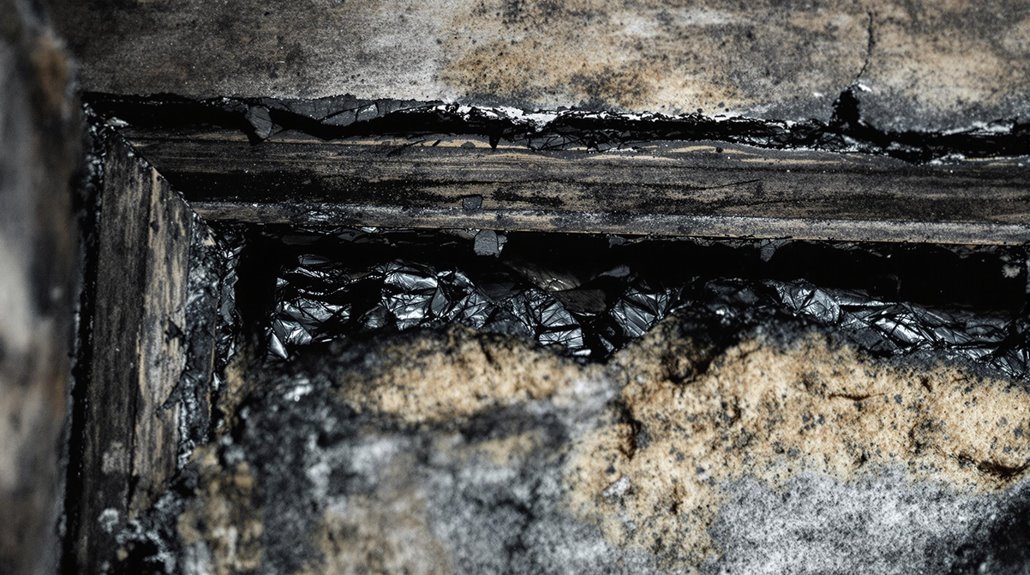
While homeowners may be inclined to address visible damage immediately, steering the fire damage restoration process requires careful planning and execution to secure safety, compliance with building standards, and successful insurance claims. After a fire, professional restoration is essential to identify and address hidden damage caused by heat, smoke, and water that may not be immediately visible. This comprehensive approach not only prevents further deterioration but also ensures that valuable belongings are protected throughout the restoration process. Effective documentation of the damage, including any salvaged items after a fire, is crucial for filing insurance claims and receiving adequate compensation. By entrusting the restoration to experts, homeowners can navigate the complexities of recovery while minimizing the emotional and financial toll of such a devastating event.
Fire damage cleanup should be handled by licensed professionals, as they possess the expertise to execute a thorough restoration plan that includes water mitigation, soot and smoke removal, and structural repairs. For smooth and efficient smoke damage restoration, it is fundamental to consult with your insurance adjuster and get written approval before starting any repairs or restoration work.
Homeowners should document all damage carefully through photographs and a detailed inventory of affected items, which will be significant for insurance claims and restoration assessments. This guidance secures a streamlined restoration process. Consider consulting public insurance adjusters who can assist in maximizing your settlement and navigating complex fire-related claims.
Determining The Status Of Your Home & Mortgage
The aftermath of a house fire presents numerous challenges, including determining the status of the home and mortgage. Contacting the mortgage lender immediately to inform them of the situation and discuss any necessary adjustments or deferments on mortgage payments during the recovery period is essential.
Reviewing the mortgage agreement is also essential to understand any clauses related to property damage and insurance claims. In cases where the home is deemed a total loss, discussing options for moving to a new property with the lender is critical. This may include potential loan modifications or assistance in managing the rebuilding process. Keeping documentation of the fire damage, insurance claims, and communication with the lender is necessary to clarify and support any mortgage-related decisions.
Understanding the lender’s requirements for using insurance proceeds for repairs or rebuilding is essential. Working with independent agents can help calculate your home’s accurate replacement cost value to ensure proper insurance coverage for rebuilding.
Accessing Local Relief Services & Resources

Following a house fire, accessing local relief services and resources is a critical step in the recovery process. Local disaster relief agencies, such as the American Red Cross, provide emergency assistance, including financial aid for immediate needs like food, clothing, and temporary housing. These organizations often offer resources such as food banks and clothing donations to help families recover from fire-related losses.
Community resources like crisis centers provide counseling and emotional support services to individuals experiencing trauma after a house fire. State and federal programs, including FEMA’s Individual Assistance, can provide financial aid for home repairs and other disaster-related expenses. Connecting with local churches and non-profit organizations is essential, as they frequently organize fundraisers or donation drives to assist fire-affected families with essential supplies and financial support.
By accessing these resources, individuals can begin to rebuild their lives and recover from the devastating effects of a house fire.
Taking Steps To Prevent Future House Fires
Preventing future house fires requires a proactive approach, as most fires are avoidable with proper precautions and maintenance. Fire safety measures can significantly reduce the risk of fires and related injuries or deaths. Implementing these measures can greatly enhance fire safety in the home.
Individuals can reduce the risk of house fires and protect themselves and their loved ones by prioritizing smoke detector maintenance, electrical system inspections, fire escape planning, and proper storage of flammable materials.
| Fire Safety Measure | Description | Benefits |
|---|---|---|
| Smoke Detectors | Install in every room and test monthly | Reduces fire-related deaths by 50% |
| Electrical Systems | Regularly inspect and maintain | Prevents overheating and electrical fires |
| Fire Escape Plan | Create and practice with family | Guarantees quick evacuation in case of emergency |
| Flammable Materials | Store in proper containers and away from heat sources | Minimizes risk of accidental ignition |
Final Thoughts
According to the National Fire Protection Association, a house fire occurs every 93 seconds in the United States, resulting in an estimated 358,500 home fires per year. After a house fire, it is essential to prioritize a safe and efficient recovery process. By following the outlined steps, individuals can effectively navigate the aftermath of a fire, mitigate further harm, and ultimately restore their homes and lives. A thorough understanding of the necessary tasks and considerations guarantees a swift and successful recovery.
Frequently Asked Questions
What Is the First Thing to Do After a House Fire?
Immediately after a house fire, the individual prioritizes safety by accounting for all family members and pets, then contacts emergency services to report the incident while refraining from re-entering the property until authorities declare it safe.
What Not to Do After a House Fire?
Refrain from re-entering the home until declared safe by authorities. Avoid discarding damaged items, beginning repairs, or canceling utilities prematurely. Delaying insurance communication is also ill-advised, as is neglecting to document damages and seek support.
How Do You Get Rid of Smoke Smell After a House Fire?
To eliminate smoke smell after a house fire, individuals can ventilate the area with fresh air, clean surfaces with a vinegar solution, utilize activated charcoal or baking soda, and professionally clean or replace HVAC filters and ducts.
How Long After a Fire Can I Sleep in My House?
A family’s home, once a sanctuary, now scarred by fire, serves as a poignant reminder of the long road to recovery. Generally, authorities may clear homes with minor damage for re-entry within days, while severe damage may require weeks or months.

